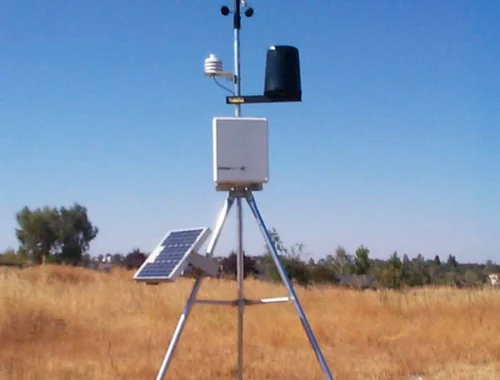Here’s the new smart sliotar being introduced to inter-county hurling
HURLING’S NEW SMART sliotar could come into senior inter-county action next year and GAA president Larry McCarthy hopes it will help maintain the “integrity of the game.”
Croke Park have unveiled the new ball which will see sliotars standardised and ensure they are supplied by approved manufacturers.
A chip is embedded in the core of the sliotar and match officials will determine its authenticity before games by holding the ball up to a smartphone app to ensure it is an official match ball.
The use of a chip for traceability in a ball is believed to be the first of its kind in world sport.
The sliotar will be trialled in the All-Ireland U20 hurling championship later this year and could come into the Allianz Hurling League and All-Ireland SHC in 2023. It is anticipated bins of smart sliotars will be placed around GAA pitches to ensure the correct balls are used.
It was designed by a work group led by McCarthy, chaired by former Kilkenny chairman Ned Quinn and also involved former Tipperary goalkeeper Brendan Cummins and DCU professor Kieran Moran, among others.
The sliotar industry has largely been unregulated over the years. With the vast majority of balls now produced in Pakistan, there were issues over them falling outside the GAA’s regulations with some illegally using the official logo. The new sliotar also addresses concerns over labour practices.
McCarthy said he asked the committee to look into standardising the sliotar in response to “the distance it was travelling” in games.
“That was my initial concern. I said to them, ‘Will you look at it please?’
“It’s standardising the ball to a certain extent. The coefficient of restitution, we can now play with that to a certain extent. We will have a ball which is our ball essentially in terms of how it’s regulated and manufactured.
“Hopefully it’ll be a step in the right direction in terms of maintaining the integrity of the game.”
He said it ensures “we have integrity in the sliotar, integrity in our equipment, and, perhaps most importantly, in our manufacturing systems. So that we’re not using child labour or anything around the world…because most of them come from Sailkot in Pakistan.”
The GAA’s rulebook around sliotar specifications has been altered to reflect the hype of sliotars currently being used. The mass of the sliotar shall be 110 – 116g (formerly 110 – 120g), rim height 1.8 – 2.6mm (formerly 2.0 – 2.8mm) and rim width 3.6 – 5.4mm (same as previous).
Amid concerns over the distance the ball is travelling, prof. Moran said making it heavier would not necessarily counteract that.
“If you produce a ball that’s slightly heavier, it will travel further. People have a perception that if you produce a lighter ball it will travel further, but it’s the opposite.
“If it’s a heavier ball it travels further because it’ll knock the air molecules out of the way if you want to get into the science of it.”
Eoin McDonagh, Louise Conlon, Larry McCarthy, Brendan Cummins and Ned Quinn of the GAA’s Smart Sliotar Work Group.
Source: Sam Barnes/SPORTSFILE
Each manufacturer must reapply for a licence to produce the smart sliotars.
Just two have been approved at the moment (Greenfields and O’Neills), but the GAA are open to others coming on board once they can past the tests.
“The GAA are putting a process in place whereby manufacturers will now be tested on a regular basis and there will be outcomes if they don’t achieve the regulations that they initially passed on,” said prof. Moran.
“That’s being looked at at the moment to see what process will be put in to address that.”
Testing involved inter-county and club players, including Cummins, Dublin’s Alan Nolan, Tipperary’s Jason Forde and Wexford’s Rory O’Connor. They found that the chips were able to withstand heavy impact and their introduction made no change to behaviour of the ball.
While they are more expensive to produce, it’s anticipated smart sliotars will be used at club level down the line.
“You would expect that when players see that ball at inter-county level, club players will want that ball as well,” said Quinn. “We are conscious of the price point. In normal times, we are looking at an additional €1 per ball increase.
“There will be a modest increase in the price but that’s one of the reasons why when we’re trialling it at U20 – the GAA will supply all of the balls.
“We don’t envisage any chipped balls for club games or inter-county (senior) games (this year) so there’ll be no increase in the cost of the balls to the clubs. But they’ll have to come to the standard of specifications without the chip, which we will be testing.
“The chip will be at inter-county level and we intend to have the chipped ball in, unless something goes wrong, for 2023 in all inter-county championships.”
All the smart sliotars will be yellow in colour to aid visibility. McCarthy said feedback on the colour from players has largely “been positive”.
“It seems to be generally accepted that it is an improvement.”
Prof. Moran added: “It helps older players in particular because as you get older your ability to see contrast decreases.
“So it might not be any better for a 16, 17-year-old but as you get older and still want to play, the contrast is better.”
The42 is on Instagram! Tap the button below on your phone to follow us!
You May Also Like

Automatic Weather Station Price Analysis and Market Trends
March 16, 2025
Escape Road: A Journey to Freedom
March 21, 2025